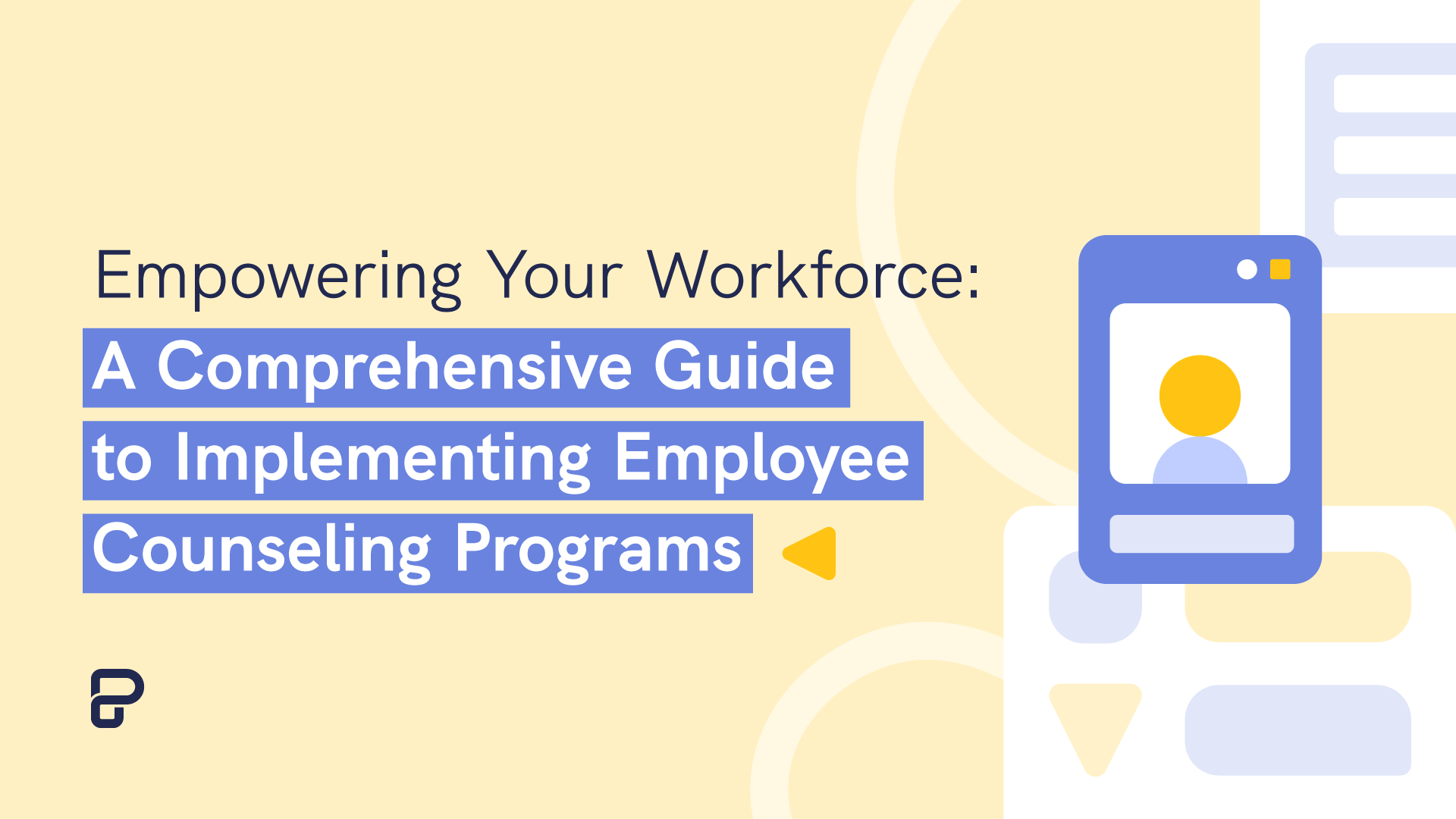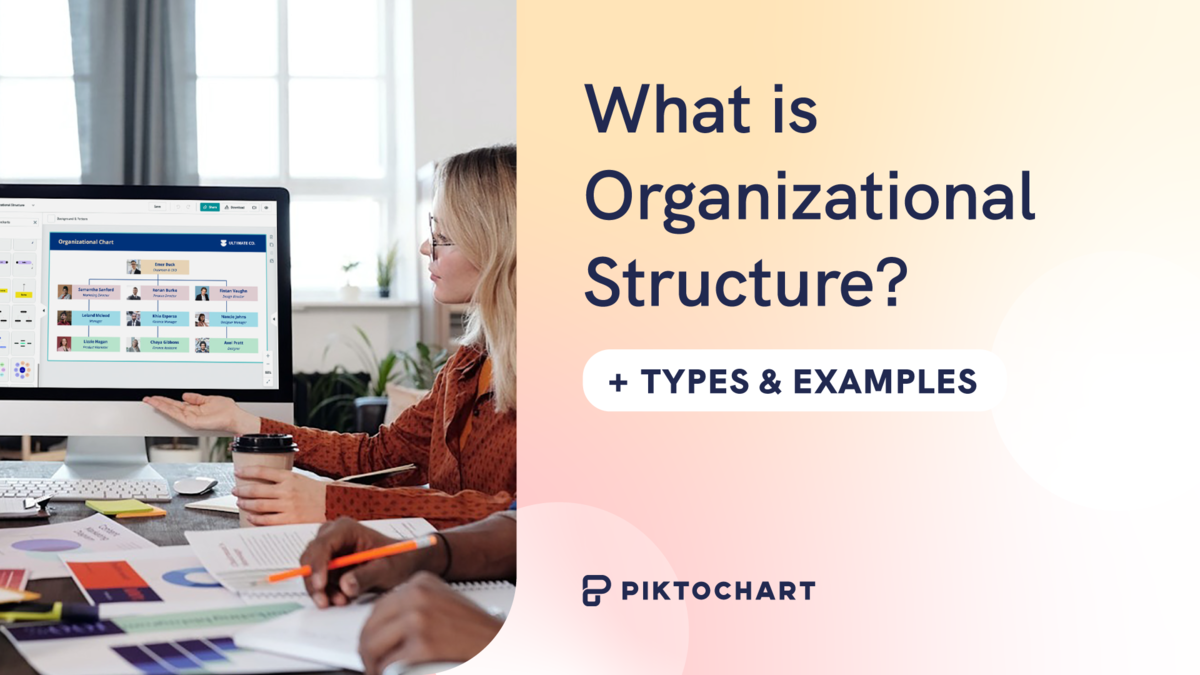I had a degree in Psychology so many would think that counseling is something that comes naturally with the package. I would not accredit my degree in my own bias to favor counseling, but rather, the people-first principles on which Piktochart is founded!
If you’re an HR professional striving to foster a positive work environment, understanding and implementing employee counseling programs should be on top of your list.
Piktochart is a visual communication tool for all your business communication needs. Customize a template according to your brand asset within seconds. Access hundreds of templates by simply creating a free account.
Table of Contents
What is employee counseling?
Employee counseling is a wonderful therapeutic approach that promotes employees’ mental health, personal growth, and boosts job performance.
It helps most employees manage their personal and professional issues that may affect their work, decision-making capabilities, or overall job satisfaction.
Who conducts employee counseling?
It’s often a job that is delegated to HR, but it doesn’t always mean that an HR professional is adequately armed to conduct counseling.
It may be best to partner with an appointed counselor externally who provides professional mental health services.
Why is employee counseling important?
Employee counseling offers numerous benefits to both employees and employers beyond improving employee performance.
Improves productivity: According to a report by Deloitte in 2020, mental health interventions yield an average return on investment (ROI) of 5:1. This means that every dollar invested in employee mental health programs, including counseling, returns five dollars in improved productivity and efficiency Deloitte, (2020). “Mental health and employers: Refreshing the case for investment.”

Reduces absenteeism: According to the Centers for Disease Control and Prevention (CDC), depression interferes with a person’s ability to complete physical job tasks about 20% of the time and reduces cognitive performance about 35% of the time. Workplace counseling can help address such issues and reduce absenteeism CDC, (2021). “Workplace Health Promotion: Depression.”

Lowers turnover rates: A 2017 study by the American Psychological Association showed that employees who feel their organizations support their well-being are less likely to want to leave their jobs in the next year – 25% of employees intending to stay vs 51% of those who are planning to leave American Psychological Association, (2017). “Work and Well-Being Survey.”

Promotes employee satisfaction: According to the Society for Human Resource Management (SHRM), 61% of employees reported that their company’s wellness program helped them live a healthier lifestyle, and out of these, 31% reported increased job satisfaction SHRM, (2016). “Employee Job Satisfaction and Engagement.”

Employee counseling programs have shown an improvement in the performance of the employees, therefore it also affects the business’ bottomline.
Situations for employee counseling
Signs of employee mental health being affected
- Performance Issues: If an employee’s work performance has significantly declined or is inconsistent, it might be a signal that they are struggling with issues that are affecting their ability to work effectively.
- Behavioral Changes: Changes in an employee’s behavior, such as increased irritability, withdrawal, regular absenteeism, tardiness can be signs of stress or other personal issues that counseling services could help to address.
- Workplace Stress: If an employee is frequently involved in conflicts with colleagues or managers, counseling sessions can provide them with strategies to manage their emotions and improve their interpersonal skills.
- Signs of Substance Abuse: If an employee shows signs of substance abuse, such as frequent smell of alcohol, unexplained absences, or changes in behavior, it’s crucial to offer directive counseling session and help them find the support they need.
- Issues with Stress or Burnout: An employee is demonstrating signs of stress or burnout, such as frequent complaints about workload, cynicism, or disengagement.

Changes that are known at a personal or workplace level
- Life Changes or Trauma: Significant life events, such as the death of a loved one, divorce, or serious illness, can significantly impact an employee’s mental and emotional health. These situations often warrant the need for counseling to help the employee cope.
- Adapting to Change: Organizational changes, such as restructuring, layoffs, or significant shifts in job roles, can be stressful for employees. Counseling can help employees navigate many situations and reduce employee stress.
How to conduct effective employee counseling?
So, how do you go about implementing effective workplace counseling?
Here are five steps to guide you:
1. Addressing the problem head on: The first step is to recognize the need for personal counseling. Regularly check in with your employees, and look out for signs of employee stress, anxiety, or decreased performance that may indicate the need for counseling.
2. Choosing the proper type of counseling: Counseling is a sensitive matter, and it’s essential to find qualified professionals to handle it. You might hire in-house counselors or partner with a professional counseling service.
3. Use HR data to diagnose: There are preventive measures you can take to prevent a burnout at the workplace once you collect the employee’s work patterns/pulse survey responses.
4. Provide Regular Training and Awareness Programs: Conduct regular training and awareness programs to educate employees about mental health, stress management, and the benefits of counseling. This will also help to destigmatize counseling and make employees more open to seeking help.
5. Evaluate and Adapt: Don’t forget to follow up! Regularly evaluate the effectiveness of your counseling strategies and make necessary adjustments. It is also crucial to evaluate the work life balance of the overall company to improve employee engagement outside of counseling.





With Piktochart, you can create presentations, reports, infographics, email signatures, posters, logos, brochures, and more. Customize, download, and make it yours within minutes. Get started today for free.
What is an employee assistance program (EAP)?
An Employee Assistance Program (EAP) is a work-based intervention program designed to identify and assist employees in resolving personal problems (e.g., marital, financial, emotional, family issues, substance/alcohol abuse) that may be adversely affecting the employee’s performance.
Employee assistance programs are often provided by a third-party organization and are usually available to both employees and their family members.
All EAP services are confidential, voluntary, and usually free of charge to employees, funded by the employers. This service is widely implemented in United States, United Kingdom, Canada, Australia, South Africa and Singapore.



